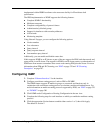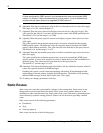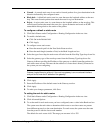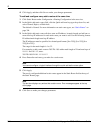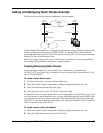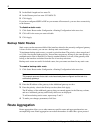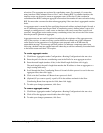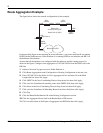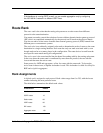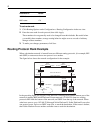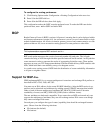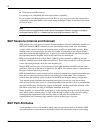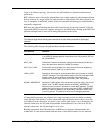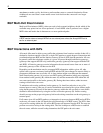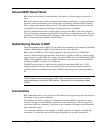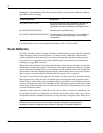
Nokia Network Voyager for IPSO 4.0 Reference Guide 401
Note
If the backbone is running OSPF as well, you can enable aggregation only by configuring
the 192.168.24.0 network in a different OSPF Area.
Route Rank
The route rank is the value that the routing subsystem uses to order routes from different
protocols to the same destination.
You cannot use rank to control the selection of routes within a dynamic interior gateway protocol
(IGP); this is accomplished automatically by the protocol and is based on the protocol metric.
You can use rank to select routes from the same external gateway protocol (EGP) learned from
different peers or autonomous systems.
The rank value is an arbitrarily assigned value used to determine the order of routes to the same
destination in a single routing database. Each route has only one rank associated with it, even
though rank can be set at many places in the configuration. The route derives its rank from the
most specific route match among all configurations.
The active route is the route installed into the kernel forwarding table by the routing subsystem.
In the case where the same route is contributed by more than one protocol, the one with the
lowest rank becomes the active route.
Some protocols—BGP and aggregates—allow for routes with the same rank. To choose the
active route in these cases, a separate tie breaker is used. This tie breaker is called LocalPref for
BGP and weight for aggregates.
Rank Assignments
A default rank is assigned to each protocol. Rank values range from 0 to 255, with the lowest
number indicating the most preferred route.
The table below summarizes the default rank values.
Preference of Default
Interface routes 0
OSPF routes 10
Static routes 60
IGRP routes 80
RIP routes 100
Aggregate routes 130



